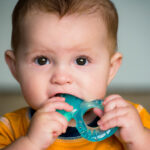Plastics linked to cancer, ADHD, and endocrine disruption
 (NaturalHealth365) Plastics are undoubtedly the most convenient material to make goods out of that has ever existed. Part of the low cost and ease of manufacturing has also made plastics the number one trash problem for all of human society.
(NaturalHealth365) Plastics are undoubtedly the most convenient material to make goods out of that has ever existed. Part of the low cost and ease of manufacturing has also made plastics the number one trash problem for all of human society.
Unfortunately, it’s not just plastics that are piling up in landfills that constitute a problem. Scientific research across the globe proves that microplastics are accumulating in humans and animals, and a new report encompassing the review of 120 studies indicates how potentially dangerous that can be for babies and young children. Of course, we don’t need another study to already know that this same health issue about plastic toxins is impacting adults, as well!
The longer microplastics have to accumulate in a human body, the more damage they can do, and this might only be the tip of the iceberg because the science behind damage from microplastics is in its infancy. Let’s take a look at this study and, keeping in line with the concept of infancy, see how much plastic exposure can hurt our young children.
Plastics and our children: Research unveils disturbing health risks
Plastics have been observed on the peaks of Mount Everest as trash left behind by tourists and some of the lowest trenches of the ocean. A recent study even proved that microplastics persist in rainwater in clouds – we have made plastic an inescapable monster.
When microplastics as a concept were first discovered, we immediately turned inward to determine how much was accumulating in our cells. The answer was terrifyingly high, and it seems like plastic accumulation causes damage in every system of the body.
Phthalates and BPA are chemicals used in certain types of plastics, usually single-use cups and other throw-away convenience items. These two chemicals are the most closely linked with childhood cancer, particularly bone cancer and lymphoma. They are implicated across the board in endocrine disruption as well, from ADHD to metabolic problems.
One silver lining regarding phthalates and BPA is that they are largely being phased out, at least in more permanent plastic items like water and baby bottles.
Here is why babies are in the crossfire of plastic perils
The damage that microplastics cause as they accumulate is especially problematic in children because they have much smaller bodies and are still developing. The rapid pace at which cells divide and grow in children makes cellular damage more dangerous as it could lead to cancer more easily.
Childhood exposure begins from the moment they are born – actually before they’re even born. Studies have shown a significant amount of microplastics in the placentas of pregnant mothers, which is then passed to the child. Babies drink from plastic bottles, suck on plastic pacifiers, and like little sharks, they explore the world with their mouths. This means that all of their little plastic toys shed microplastics whenever they’re chewed on by a teething toddler.
From ADHD to cancer, the risk is real
In a comprehensive study encompassing over 2,000 childhood cancer cases, exposure to phthalates, a commonly used chemical in plastics, revealed a concerning trend. The research found that this chemical was associated with a 20% higher overall rate of childhood cancer.
Delving deeper, contact with phthalates was linked to a nearly three-fold higher rate of bone cancer and a two-fold higher rate of lymphoma, a form of blood cancer. These findings shed light on the potential health implications of exposure to everyday chemicals in the development of childhood cancers.
Certain autism spectrum disorders and ADHD are also linked to high amounts of plastic exposure. Research suggests that this might be because plastic disrupts neurotransmitters like dopamine as well as hormones that are key for focus and attention.
Protecting your family from plastic exposure
While it is a noble effort to try and eliminate 100% of plastics from your family’s life, it is probably impossible. Too many things are made with plastic now, so unless you make all of your own products, it’s extremely unlikely to avoid it entirely.
There are some things you can do to mitigate your family’s exposure to plastics, however, and they are relatively simple.
Ensuring that baby bottles are BPA and phthalate-free is a simple and cost-effective measure to cut off the largest source of plastic exposure for most children.
Again, if you are going to buy them toys, at least for young children, you can opt for wooden toys. These do not cause nearly the same kind of problem, if chewed on, and are more durable than whatever plastic light-up gadget is being marketed towards them.
In your own home, opt for natural fabrics and materials for plates and glasses. Avoid heating up anything in plastic, be it plates or cups, because that allows for easier transfer of microplastics.
Finally, you can use natural detergents and soaps because certain laundry products – especially those little scent-boosting balls you can add to the wash – can be a source of microplastics as well.
So the bad news is that plastic is here to stay, at least for a while. But the good news is that you have the power to drastically reduce your family’s exposure to it. By choosing natural products made of wood, stone, glass, or metal, you are opting for quality, durable products that do not expose your family to microplastics. Plus, every time you make a choice for a product that is not a throwaway plastic, you’re helping the environment, which is a win-win.
Editor’s note: To learn more about how to effectively detoxify the body of unwanted toxins, watch this video that reveals my #1 detoxification strategy for protecting my health.
Sources for this article include:



